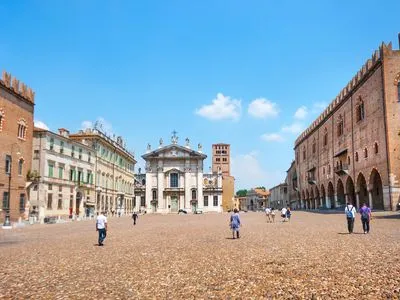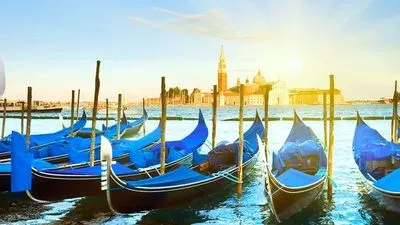

Despite Mantua's historic power and influence under the Gonzaga family, Mantua remains a little-known enclave in Northern Italy, but it is one of the richest and romantic cities and still carries pervasive vestiges of its Renaissance past today. We’ll visit the Palazzo Ducale di Mantova (Closed on Mondays, replaced by a visit to the Basilica of Sant'Andrea.) which overlooks the city center. Built between the 14th and the 17th centuries by the noble House of Gonzaga, the property comprises many buildings such as the Castel di San Giorgio which was designed as a defensive structure aimed at protecting the heart of the town, and subsequently converted into the main residence of the Gonzaga family. We’ll also visit the Camera degli Sposi (“bridal chamber”), known for its frescoes executed by Andrea Mantegna as a celebration of the Gonzaga family. We’ll then reach the historic center of the city where you’ll visit the Rotonda di San Lorenzo and the Basilica of Sant’Andrea.
PLEASE NOTE

Despite Mantua's historic power and influence under the Gonzaga family, Mantua remains a little-known enclave in Northern Italy, but it is one of the richest and romantic cities and still carries pervasive vestiges of its Renaissance past today. We’ll visit the Palazzo Ducale di Mantova (Closed on Mondays, replaced by a visit to the Basilica of Sant'Andrea.) which overlooks the city center. Built between the 14th and the 17th centuries by the noble House of Gonzaga, the property comprises many buildings such as the Castel di San Giorgio which was designed as a defensive structure aimed at protecting the heart of the town, and subsequently converted into the main residence of the Gonzaga family. We’ll also visit the Camera degli Sposi (“bridal chamber”), known for its frescoes executed by Andrea Mantegna as a celebration of the Gonzaga family. We’ll then reach the historic center of the city where you’ll visit the Rotonda di San Lorenzo and the Basilica of Sant’Andrea.
PLEASE NOTE

